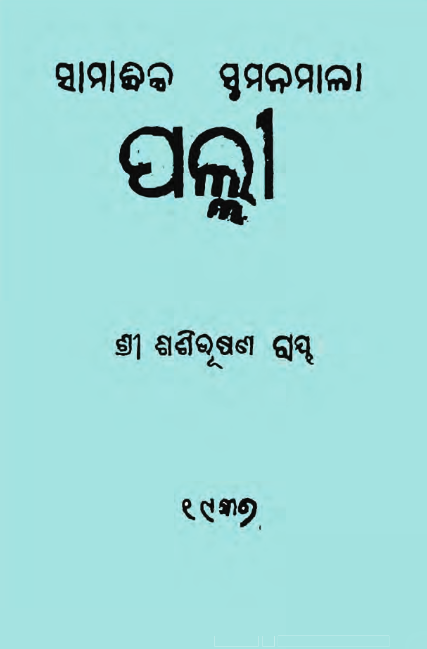Shashi Bhusan Ray’s Samajika Sumanamala – Palli, published in 1937, stands as a significant work in Odia literature, offering a multifaceted exploration of rural life and social issues in Odisha. The title translates to Social Garland of Villages, which aptly encapsulates the essence of the book: an intricate weaving of essays that shed light on the myriad facets of village life, social customs, and the cultural tapestry of Odisha.
The late 1930s were a time of social and political upheaval in India. As the country grappled with the impacts of colonialism and the push for independence, there was also a growing awareness of the issues facing rural communities. Shashi Bhusan Ray’s work forms part of this larger dialogue. He provides a nuanced perspective that transcends mere observation, delving into the sociocultural dynamics that govern rural societies.
Samajika Sumanamala – Palli is structured around various essays, each functioning as a separate yet interconnected piece that contributes to the book’s overarching narrative. The essays touch on themes such as traditional customs, the role of women, agricultural practices, and social hierarchies. By doing so, Ray successfully unveils the complexities of rural existence, all while maintaining a touch of poetic elegance.
One of the most striking aspects of Ray’s work is his deep appreciation for the simplicity and beauty of village life. He captures the essence of daily routines, festivals, and rituals, illustrating how they bind the community together. Yet, Ray does not shy away from addressing the underlying social issues, such as caste discrimination, poverty, and the marginalization of women. His keen insight encourages readers to reflect on the cultural practices that shape societal norms and the need for reform in order to foster equality and justice.
Ray’s essays are rich with vivid descriptions and illustrations of rural landscapes and lifestyles. His portrayal of the village not only includes its physical beauty—the lush fields, serene rivers, and vibrant festivals—but also highlights the communal bonds that bind its people. He subtly critiques the stagnation within some of these traditions while celebrating the resilience and creativity of the villagers.
In discussing women’s roles, Ray presents an ambivalent picture. He acknowledges the strength and contributions of women in sustaining familial and social structures but also points out the limitations imposed upon them by traditional norms. This nuanced portrayal prompts readers to consider the progress achieved and the challenges that remain in the quest for gender equality.
Books Info
| Books name | Samajika Sumanamala – Palli / ସାମାଜିକ ସୁମନମାଳା – ପଲ୍ଲୀ |
| Author | Shashi Bhusan Ray |
| No Of pages | 151 |
| Publisher | NA |
| Publication | 1937 |
| Printed At | NA |
| Distributor | NA |

